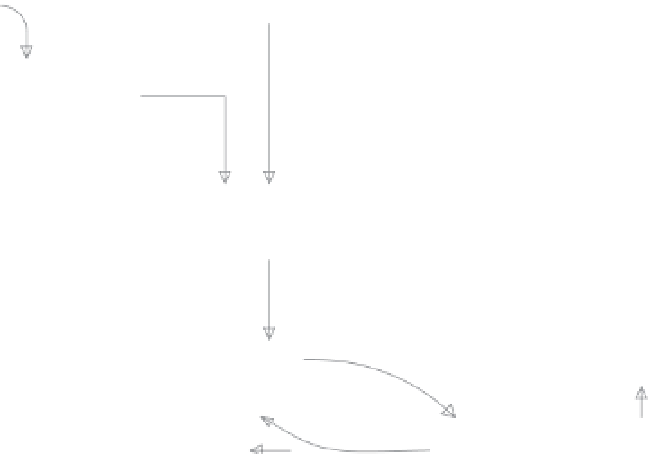Agriculture Reference
In-Depth Information
solution increases, necessitating disinfec-
tion of the return solution (Dasberg, 1999a;
Marfá, 2000). The drainage percentage is
limited by the capacity of the disinfection
system and by the risk of root asphyxia. The
more drainage the better will be the control
of salination of the recirculating solution.
When the water is of good quality it is
possible to use closed systems, but if the
water is of medium quality it will be advis-
able to use semi-closed systems (flushing
out or periodically discarding the concen-
trated recirculating solution) and when the
water is of poor quality it will be necessary
to use open systems, or to clean the source
water by reverse osmosis. In open systems it
is essential to have good irrigation schedul-
ing (doses and frequency), the absorption of
nutrients being less relevant, whereas in
closed or semi-closed systems it is the oppo-
site (Sigrimis
et al
., 2003).
The simplest closed system (Fig. 10.3)
uses a mixing tank where the nutrient solu-
tion is added to the drainage water that is
being recirculated. Then, irrigation is per-
formed from the mixing tank. The system
has, at least, one output (water and nutri-
ents absorbed by the plants) and one input
(water and nutrients injected in the mixing
tank), if all of the drainage water is used.
Recirculation systems require good lev-
elling of the land, with uniform slopes of
0.5%, and may adopt different arrange-
ments (Fig. 10.4).
In order to prevent the propagation of
diseases it is necessary to disinfect the
drainage water. For this, the most usual pro-
cedures are (Kempes, 2003): (i) to heat the
nutrient solution, at least, to 95°C for 30 sec;
(ii) to apply UV radiation, within the range
of 200-315 nm in darkness, to inactivate the
pathogens; (iii) to filter the drainage water,
by means of a membrane or sand beds; the
majority of pathogens are eliminated with
pore sizes between 0.01 and 10 mm; and
(iv) chemical treatment with chloride,
ozone, hydrogen peroxide or bleach.
When salts accumulate excessively in
the mixing tank (Fig. 10.3), it will be neces-
sary to discard the drainage water (i.e. to
flush it out), in order to eliminate the salts.
Salinity in soilless growing systems
The total salt content in the irrigation water,
expressed by the electric conductivity (EC),
Concentrated
solution
Re-filling
Water storage
tank
Constant EC
Nutrient
solution
Irrigation
Mixing tank
Absorption
Substrate
Lixiviate
Drainage
Fig. 10.3.
Scheme of a simple soilless closed growing system (with recirculation).



